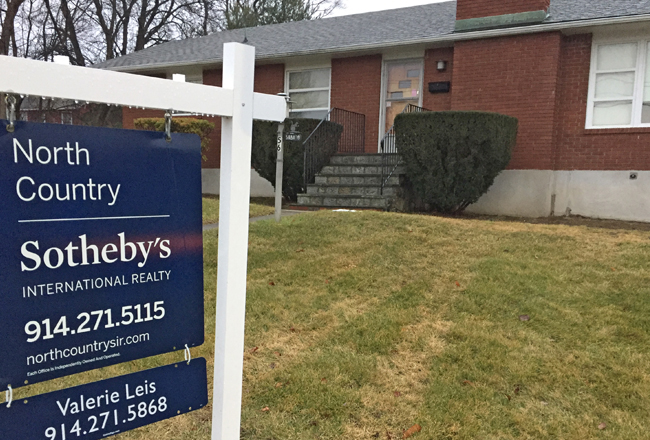
A decline in the supply of housing in the lower Hudson Valley region has led to a long-expected price increase for most residential property types, according to market analysts at the Hudson Gateway Association of Realtors.
In its quarterly report for the four-county region, analysts said the second-quarter median sale price of a single-family home in Westchester County was $670,000, an increase of 3.1 percent over the prior year.
In Orange County, where high sales volumes and flat prices have long been the trend, the median price of a single-family home increased 5.6 percent on the year to $235,000. Rockland County”™s median price of $441,387 was up 2.6 percent, and Putnam County”™s median price of $345,000 saw a “significant” 9.9 percent increase over last year.
“Prospective homebuyers were operating in a market that has seen tremendous reductions in the supply of for-sale housing over the past four years,” analysts noted in the report.
At the end of 2014, there were 12,153 active listings posted with Hudson Gateway Multiple Listing Service in all its service territory and among all its property types. By the end of the second quarter of 2017, the number of listings plunged to 8,713.
“The double-digit percentage rate of shrinking inventory is continuing as new listings barely make up for high rates of sale,” the report continued.
In Westchester alone, end-of-quarter inventory was down 14.6 percent across all property types compared to last year.
“The market is just insanity right now,” said HGAR President Dorothy Botsoe. “It”™s definitely a seller’s market.”
Botsoe added that while she is glad the real estate market in the lower Hudson Valley is excelling, higher prices and a quick turnover of homes on the market are leaving one group in particular on the outs. “It”™s leaving a lot of first-time homebuyers out there, because not everyone can afford a $670,000 house,” she said. “They”™re losing out.”
Realtors participating in Hudson Gateway Multiple Listing Service reported closing 4,726 residential transactions during the second quarter of 2017 in the four-county region, an increase of 4.4 percent from last year. Those sales largely reflect market activity during the winter and early spring months of this year.
Westchester posted 2,642 second-quarter sales, a 1 percent increase from the second quarter of 2016. Of those sales, 1,621 were single-family homes, 354 were condominiums, 522 were cooperatives and 145 were multifamily homes.
The mean or average sale price of a home in Westchester was up 7 percent year-over-year to $900,000. Analysts point to this increase as an indicator that the high-end sector, which realtors have noted has faced some difficulty in recent years, may be reinserting itself into the sales mix.
“I think it”™s been slow but steady,” Botsoe said of the growth of the luxury market, adding that the segment “was gone for some time but it”™s coming back really strong.”
Orange County saw 1,098 sales during the second quarter, an increase of 13.8 percent on the year.
While Rockland County saw a 3.8 percent increase in single-family house sales to 514, its condominium sector saw the largest surge in activity, with 147 sales amounting to a 33.6 percent increase from the second quarter last year.
Putnam County was the only county that saw a decrease in single-family home sales, with 241 closings, a 5.1 percent decline from a year ago.
“There appear to be no obstacles to a continuation of a healthy Hudson Valley real estate market, except for the shortage of inventory, which may inevitably drive prices higher or may diminish the volume of sales, or both,” the report said. “Those are the internal machinery of the market; we do not have negative external factors right now that are threatening.”
The report noted some positive external factors to the residential market include low mortgage interest and unemployment rates, healthy job growth and well-paced increases in Federal Reserve interest rates.
However, some negative factors do exist, including possible changes to the federal tax code affecting real estate and “chaotic governance that causes consumers, i.e., prospective homebuyers, to lose confidence in executing their home-buying intentions,” according to the report.






















